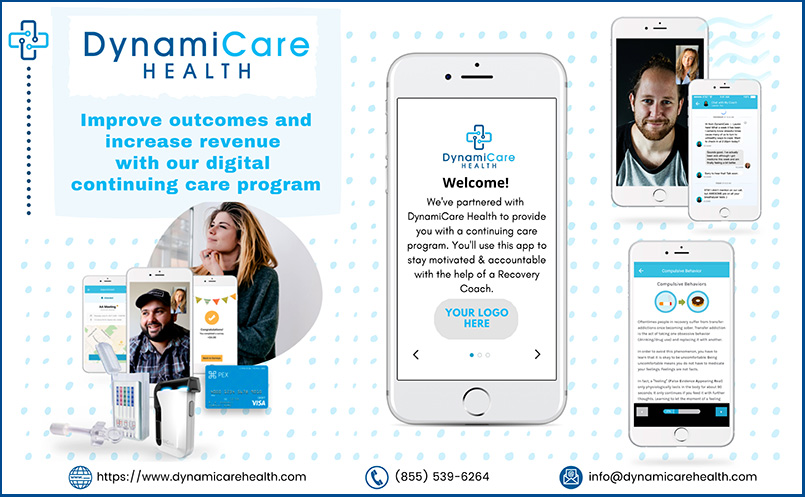What if I told you that one of the most powerful and evidence-based clinical interventions for substance use disorder was nearly abandoned and forgotten? It’s true.
With the opioid epidemic raging, the stimulant epidemic on the rise, and the COVID-19 pandemic exacerbating behavioral health issues more than ever, we need to use every effective tool in the addiction treatment toolkit. There are no shortages of ideas for helping people with addiction, but unfortunately, many ideas that seem promising at first don’t stand up to rigorous scrutiny in clinical research. All the more reason why when we find something that really does work, it’s imperative that we, as a field, adopt it and bring it to the people who need it.

David R. Gastfriend MD, DFASAM
Yet, we nearly missed that opportunity with one powerful, yet overlooked intervention: Contingency Management. Also known as CM, Contingency Management is the practice of motivational incentives — treating the disease of addiction as a brain reward disease. CM uses rewards that are contingent on good behavior, such as negative substance tests and attendance at appointments. Every time patients show up to their outpatient appointments and test negative, they earn a reward for their progress.
For over 50 years, research has piled up showing that CM is one of, and perhaps the most, effective psychosocial interventions for substance use disorders (Dutra 2008). It consistently doubles to triples abstinence rates, and it works for tobacco, alcohol, opioids, and even stimulants — where little else works and there are no FDA-approved medications. There have been over 100 research reports on CM, and its use is recommended by the NIH, U.S. Surgeon General, and American Society of Addiction Medicine.
The reason CM works is simple: it uses frequent & immediate positive reinforcement to reshape pathways in the reward system of the brain. The reward system of the brain, called the limbic drive system, is deep-seated within our skulls and evolutionarily ancient — we share the structure with lizards. It drives our basic motivations for life and survival. What sets humans apart from other animals is the complexity of our cortex, the outer layer of our brain, where we do our high level thinking. But the reward system is the master. It sets the goals and recruits the cortex (where we generate conscious thought and speech) to do its bidding. When chemical reward signals from alcohol or drugs hijack the reward system, the reward system hijacks the rest of the brain, leading to the disease we know as addiction. CM’s power lies in its ability to directly impact the reward system, something other psychosocial interventions like talk therapy cannot do.
Yet, few providers have even heard of CM (Petry 2011), let alone utilize it routinely in clinical practice (with the notable exception of the U.S. Veterans Administration). Researchers and experts were well aware of its efficacy, but outside of that small circle, CM languished in obscurity. After 100 studies, researchers and the NIH began to lose hope that the 101st study would make any difference. Bringing CM into routine practice would require changing clinical training, payer policy, and government regulations, a daunting task with no clear solution in sight. Without a drastic innovation or disruption, nothing was likely to change.
Enter the Smartphone. By the 2010s, they had become ubiquitous, and technologists were making great strides in applying technology to address healthcare problems, with the advent of the digital health industry. And CM was ripe for automation, because of its simplicity. Apps are perfect for reward systems (think of hotel/airline points apps or video games)!
There are now multiple companies with apps that use rewards to help people with substance use disorders. These apps verify positive behaviors, such as completing an in-app Cognitive Behavioral Therapy module, or showing up to a therapy appointment (using GPS), and then automatically deliver rewards, such as points or gift cards. My company, DynamiCare Health, also provides our members with breath and saliva testing devices so that they can perform substance tests remotely, verified over selfie video. Negative tests earn our members financial incentives on a debit card. The debit card, however, is “smart” — it blocks access to bars, liquor stores, and cash withdrawals.
This system implements CM in a way that’s true to the research, since it creates strong accountability through true-witnessed, true random testing (even evenings, weekends, and holidays). It’s more rigorous than usual testing, but because it’s in exchange for prompt, frequent, financial rewards that members care about, satisfaction ratings are surprisingly high. We have demonstrated in 3 clinical trials that our system, similar to the previous research, has been able to increase abstinence rates by 2-3x across drugs, alcohol, and tobacco. There’s a bottom line benefit for providers, too — elevated attendance rates. We’ve dramatically simplified the delivery of CM through technology, while maintaining its effectiveness.
Technology is now driving a “CM Renaissance,” breaking the sound barrier for adoption by getting commercial and Medicaid health plans to start offering CM to their insureds. The public is taking notice, too; the adoption of CM through technology has been covered in the New York Times, Wall Street Journal, and CBS News. Health systems and addiction treatment providers around the country are starting to integrate CM technology platforms into their practice. And where adoption has lagged behind, families have begun paying out-of-pocket for CM programs for their loved ones.
At DynamiCare, we believe that CM is a critical component of a continuing care program, but not a silver bullet. That’s why we’ve designed a 12-month program that uses CM to help stabilize and anchor the member, with help from a supportive telehealth Recovery Coach, as they work together to build the skills for long-term recovery. Our digital care program is often used to complement Medication Assisted Treatment (MAT) and other treatment modalities. Within DynamiCare, we’ve built upon CM and integrated it with Cognitive Behavioral Therapy (CBT), Motivational Interviewing (MI), Community Reinforcement and Family Therapy (CRAFT), and other evidence-based interventions.
Treatment programs can license DynamiCare’s technology to integrate it into their practice, or resell the program directly to patients and families. If you’re interested in using DynamiCare’s platform in your treatment program or practice, please reach out to us at info@dynamicarehealth.com, (855) 539-6264, or please visit us online at www.DynamicareHealth.com.
References
- Dutra L, Stathopoulou G, Basden SL, Leyro TM, Powers MB, Otto MW. A meta-analytic review of psychosocial interventions for substance use disorders. Am J Psychiatry. 2008;165(2):179-187. doi:10.1176/appi.ajp.2007.06111851
- Petry NM. Contingency management: what it is and why psychiatrists should want to use it. Psychiatrist. 2011;35(5):161-163. doi:10.1192/pb.bp.110.031831





